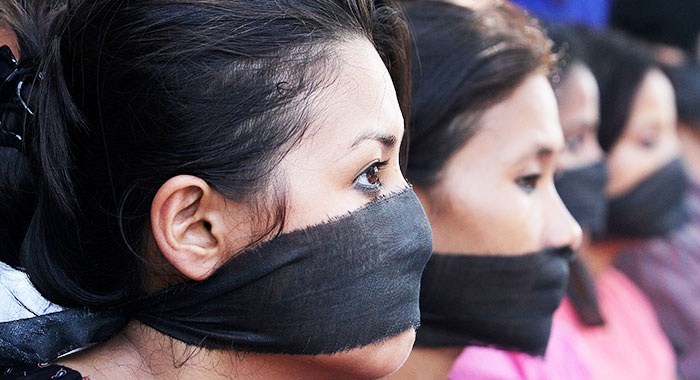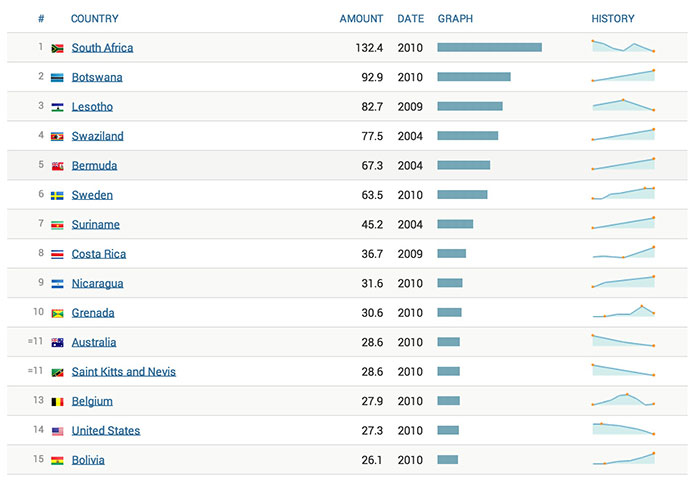[Plight of Indian women is a marketing tool for the Global evangelical movement.]
Rape is a terrible crime, a case where the victims are overwhelmingly women and the perpetrators overwhelmingly men. Every rape carries with it a personal story of trauma. To use statistics to speak about rape appears to dehumanize it into a number. Yet, when the mainstream news media is branding India into a “rape capital”, it is worth a pause. Maria Wirth, a German émigré to India wrote on how she found German TV disproportionately reporting a rape incident in far-away India, while a local rape was a small inside item. Similarly, a rape in a Cab in New Delhi made it all the way into the New York Times while an estimated 700 rapes on that day in the US merited no mention. This begs the question—is disproportionate coverage of rape in India justified? Or is it driven by an agenda?
First, a look at the numbers. If we go by reported rape statistics, India has one of the lowest rates of rape in the world, sensationalist coverage notwithstanding. Here are the top 15 countries of the world by rapes per 100,000 people. (Source: Nationmaster.com)
We find that South Africa tops the chart in per capita rapes and Australia and the United States are in the top fifteen. (Note some of this data is from different years, based on available statistics. )If we just use the year 2010, the United States in the top 10 countries in the number of rapes. So is Sweden, right up there with Suriname.
Now, it is reasonable to question the figures based on reported rapes alone since there is considerable under-reporting of rapes. However, every country has problems with under-reporting. In Islamic countries under-reporting is a severe problem because of the difficulty of getting rape convictions in Islamic law. While the US is among the top countries in reported rape, still a majority (60%) of sexual assaults go unreported. Based on data collected by the US organization RAINN, factoring in unreported rapes, only 3% of rapists in the US would spend even one day in prison.
While low conviction rates and the difficulty of getting justice is given as one reason for low reporting of rapes in India, convictions rates are fairly low worldwide. The rate of rape conviction in the UK is only 6.5 percent in England and Wales, with a shocking low of 2.9% in Scotland. With such a low chance of conviction, women would be increasingly reluctant to go through the trauma of a rape trial and reporting rates would be depressed. India, by contrast, has a significantly higher rape conviction rate. While many countries, including UK and France, have shown a decline in rape conviction rate, India’s rate, despite a decline, is still several times higher than the UK at 26.4% with Delhi having a whopping 41.5% rape conviction rate, despite India’s notoriously inefficient justice system. A high chance of conviction would also have a positive affect on higher reporting. Thus the comparison of reported rape statistics cannot be dismissed out of hand, even though there are likely differences in reporting rates across countries. Given that caveat, let us see where India stand in reported rapes per capita in the table where the US is in the top 15.
India is near the bottom, at number 94, right next to Canada. (Total number of countries in this list, where statistics were available, was 119). Canada and the US are also a study in contrast. Though they are neighbors, and are superficially similar, their rape rates are a study in contrast. If countries were low in the list simply because of differences in reporting rate and not actual crimes, we would need to explain why the reporting rates between Canada and the US are so dramatically different. If not, we have to accept that the rank in this table, at least to some extent, reflects the actual rape rate. Along with India, Buddhist Japan and Hindu Nepal also find themselves near the bottom of the list.
Why then this huge preoccupation with rapes in India in Western media and the Indian media echo box. A clue is found on this website a veiloftearsmovie.com. This is a Christian evangelical site, releasing a major film on “A Veil of Tears,” the plight of Indian women. The movie starts by dramatic accounts of the Delhi gangrape and starts to list a litany of ills in the “persecution” of India women and how it was important to save them. The agenda? The website is clear. They are explicitly marketing the movie to Church groups to collect funds and their partner is “Gospel for Asia.”
“While the film, “Veil of Tears”, brings into focus the truth behind a dark reality existing in the world today, we are excited to highlight the hope being given to countless millions of women each day through the work and ministry of Gospel for Asia…
We invite you to take a moment to learn more about the mission of Gospel for Asia and how you can be a part of our movement to rescue generations of women from persecution and rejection and into the hope of Jesus Christ.”
The plight of Indian women is a marketing tool for the Global evangelical movement, that are shown explicitly using this to ask for money.
Indian itself is the biggest target country in the Joshua Project, aimed at converting people between the 10-40 parallels. The missionary work is done on a war footing with detailed statistics about “unreached people,” every city and village with tribe and caste affiliations. India is the biggest and softest target. Most Islamic countries limit Christian missionaries, as does China. India is a unique place with the highest number of people to convert, the easiest access and the most naivete about the conversion war.
Can this influence news reporting? As I point out in my research into the Conversion War, we have to remember the size of the money involved. The one-year revenue of institutionalized Christianity is estimated to be $260 billion dollars (2001) figures. iAbout a fifth of this, $47 billion, are allocated to global mission work every year.
Missionary activity is also well organized and coordinated with deep reach into the media. There are coordinating groups for Christian and Christian-friendly media persons in India. The Shankracharya “murder” story was broken in one of these coordinated attacks. We, the heathen “target group” is, of course, blind to all these activities.
A $250 billion corporate force with the support of the most powerful countries on the planet can create a lot of influence. People in India are especially susceptible to regarding Christianity as a benign force and the Christian narrative dominates the media. The demonization of India for rapes is part of this propaganda war. US missionaries are the biggest funders of evangelical activities in India and are pushing the narrative that Christianization is necessary to “save” Indian women from the “oppressive native culture.” Unfortunately Indian media is complicit in this global campaign. This when the US has 16 times the rape rate of India. Even if we consider that the actual Indian rape rate is 4 times what is reported, and the US reports every rape (research indicates it barely reports half), women in the US would still be 4 times more likely to be raped that in India. Whose culture needs saving? Why is the rape rate in Christian US so high? These are questions worth exploring.
Meanwhile, we should shun the hyperbole created by Indian and international media on this issue that does little to help Indian women. Rather than hyped up culture-blame article with no solutions (other than the implicit one that women have to be liberated from this oppressive culture, ideally by White Christian knights in shining armor), it is better to take incremental non-sensationalist steps. This includes police sensitivity training on handling rape victims and reports and tools for women and men including education and safety tips to reduce rape. It is the Indian media and television channels that are part of the exploitation of this issue for sensationalist coverage. They have not been part of the solution. Rather the media’s own role in commoditization of women’s bodies for selling products, newspapers and channels should be under the scanner.
Source: World Christian Encyclopedia, 2nd Edition. Oxford University Press. 2001
This article was original published at NitiCentral.com




"……women in the US would still be 4 times more likely to be raped that in India. "
I am really keen to know where have you got these figures from, Sanu?
Your profile says you are a researcher & it would really add a lot of substance, to the above matter, to know where all your research has been done from & where exactly you achieved these figures from.
Be gone thot
I thought he’s already explained that using the days in the table. He said “This when the US has 16 times the rape rate of India. Even if we consider that the actual Indian rape rate is 4 times what is reported, and the US reports every rape (research indicates it barely reports half), women in the US would still be 4 times more likely to be raped that in India.”
If Christian South Africa, Sweden, UK, USA, France, Italy, Germany and so on have so much rape, why do heathens like us need “saving”? Let the conversion thugs spend their money on fixing their USP first. Would you buy and eat a rotten banana?
Came across this only now (well after it was published) – this research and writing are astounding. Your work on exposing the lies about India is great. You are an inspiration for other budding researchers who want to join the fight against the attack on Indian identity and India as a dharma-based nation.
Thanks for showing the problem in the right perspective!
An eye opening article, Sankranth! Now one can see why the media does what it does! See if you can get “The Hindu” to publish a revised version of this article! Tough to get through the thick heads there….!